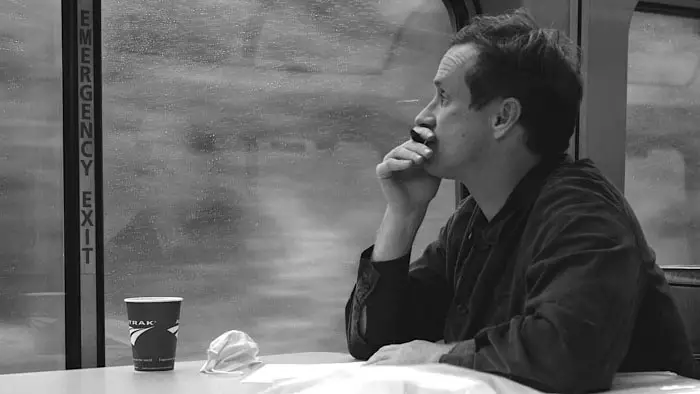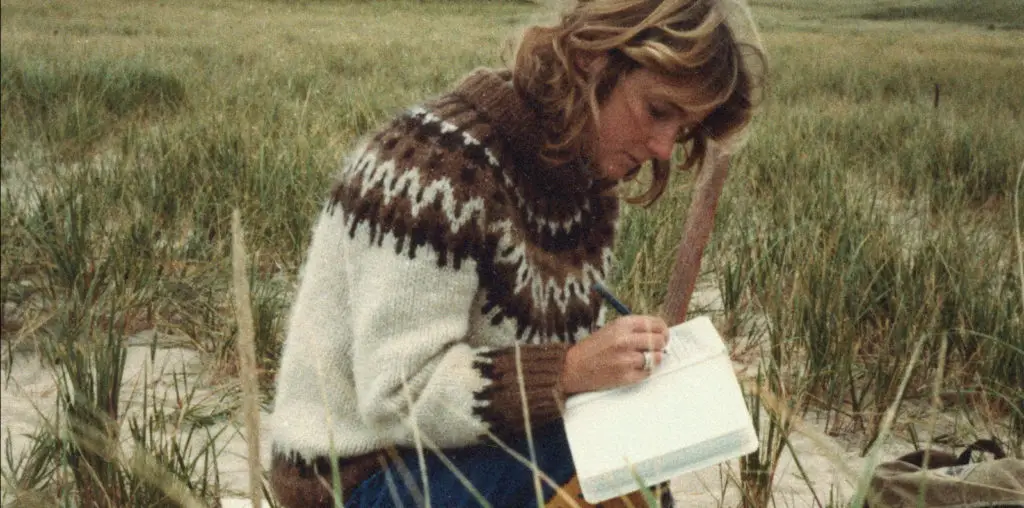
Ferroequinology is the study of railways and locomotives. Directed by Alex Nevill, the documentary Ferroequinology follows two artists who are both captivated by trains but in very different ways. So then, can the film appeal to people who are not passionate about the iron horse?
While riding Amtrak from California to Oregon, McNair Evans strikes up conversations with fellow passengers, takes their pictures, and writes a story/journal entry about everyone he’s met. They may have gotten on at different stations, heading to various stops, but Evans is interested in them, no matter their circumstance. His project gets at the heart of why people board the train. His journal entries highlight the uniqueness of all the passengers while examining their similarities.
Meanwhile, Andrew Cross treks across the Nevada desert in hopes of snapping photos of freight trains still using the mostly-forgotten tracks that criss-cross the Black Rock Desert. Cross waits hour after hour for a locomotive to come by, aiming to snap that one perfect shot. Unfortunately, he’s not always prepared, and the elusive photo remains so.

“…two artists who are both captivated by trains but in very different ways.”
Ferroequinology is a quiet, unassuming movie as Nevill never pushes or prods his subjects. Cross is not the biggest of talkers, but when he speaks about the freight trains he’s seen or why a shot has been set up just so, he is quite eloquent. However, Cross is also a bit dry, so audiences who might not care for photography or railways might get a bit bored. For me, though, learning more about the intention and meaning behind any artwork is interesting.
But, the heart and soul of the documentary is Evans interviewing other Amtrak passengers. One discussion involving a teenager dives into her troubled family past while she expresses great enthusiasm for the future; she hopes to attend college soon. Another elderly gentleman and Evans get into a theological discussion that is very engaging.
Nevill was also the cinematographer and shot Ferroequinology in lush black and white. The monochrome palette works wonders during the segments with Cross. The majesty of the Black Rock Desert is on full display, as the filmmaker captures its natural beauty well. Plus, the choice to shoot in black and white might harken back to the earliest days of cinema. The most obvious reference point is the Lumière Brothers’ The Arrival of a Train at La Ciotat Station. That is the short silent movie that sent unprepared viewers running for their lives out of the theater and into the street for fear of being flattened by the vehicle. Yes, that legend has been largely debunked, but it is such a good myth that it hardly matters.
A portion of Ferroequinology may not engage viewers, as it can be a bit too matter-of-fact if one is not into landscape portraitures. But even then, the cinematography will sweep up audience members, so there’s also something to latch onto. Plus, the other half, involving Evans and various train passengers, captures humanity at its best — when people genuinely connect and truly empathize with each other.
Ferroequinology screened at the 2022 Slamdance Film Festival.

"…captures humanity at its best..."


